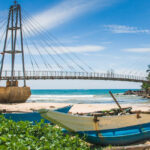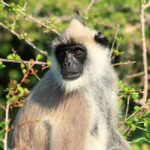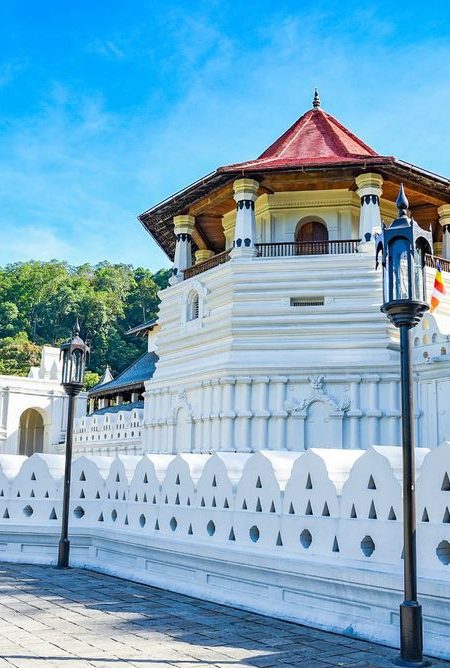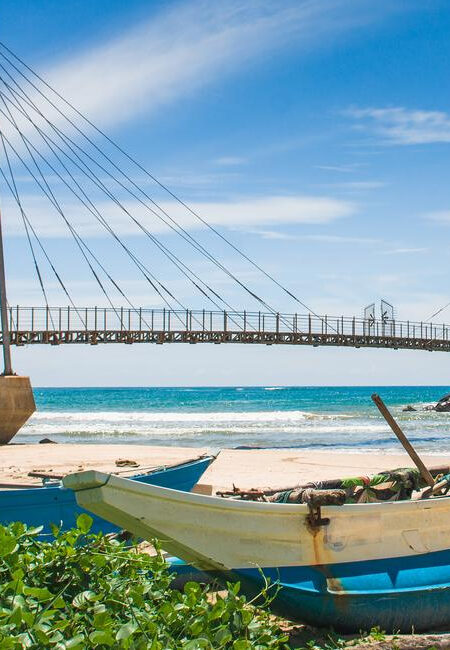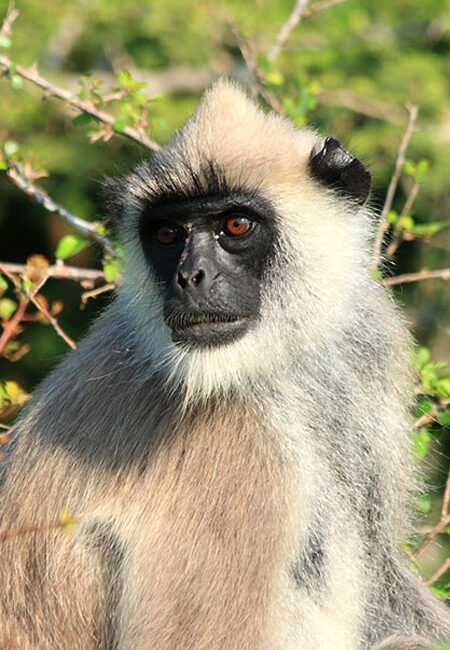At the very heart of Sri Lanka, in the very misty heights of central highlands, is a breathtaking sweep of land which epitomizes raw natural beauty and ecological diversity. The UNESCO-listed Horton Plains National Park has a landscape of cloud forests, alpine grasslands and waterfalls, including the precipitous 955m (3,133 ft) World’s End — sheer cliffs with nothing but a sky above. A pristine plateau supporting a wide array of flora and fauna, some of which occur nowhere else on earth.
The visitors to Horton Plains range from mind calming nature walks through the well grown forest to the thrill of reaching World’s End—a sheer precipice with a drop of about 870 meters providing panoramic views of the countryside and southern coastline on clear days. Baker’s Falls too are a spectacular sight and the cascade adds to the beauty of the area.
The information in this guide is designed to provide you with everything you need to help you get the most out of your visit to Horton Plains. Whether you want to know about the park’s history and unusual biodiversity or get practical advice on how to navigate the trails and keep the park unspoiled, we’ve got you covered.
Horton Plains – A Brief History
Not only Horton Plains National Park was named after the British Governor of Ceylon Sir Robert Wilmot Horton who was from 1831 to 1837, this National Park includes a precolonial historical tapestry. Known as ‘Maha Eliya Thenna,’ or ‘great open plain’ in Sinhala, local villagers and British colonialists both came to the plains. Over the years, the park has become an important conservation area, and its once significant appeal as a hunting ground during British rule has been changed by more recent attractions of the human relationship with nature.
The British, attracted to the climate and moorland like landscape first started to discover and document the region in the early 19th century. The names of many sites within the park and its architecture bear their influence. The area was designated a national park in 1969, as the role of the region as an important environmental resource and the need to preserve its biodiversity has been more widely recognised.
Over recent years Horton Plains has become a focus point for conserving the site and preserving the character of the site, both by addressing the problems of invasive species and of increasing visitor numbers. The park’s history is, however, more than just a story of exploration and conservation, reflecting, as it does, Sri Lanka’s increasing awareness of its environmental concerns as well as its cultural heritage.
Preparing for Your Visit
When visiting Horton Plains it is important to prepare. The mist, as it’s starting to lift, makes for the best times to visit, when the grandeur of the plains is first revealed just after sunrise. It also means you’ll have more of a chance of spotting some of the park’s wildlife, which tends to be out and about more through the cooler parts of the day.
- Best seasons to visit: Between January and March is the best time to visit Horton Plains, as the weather is most stable and the least probable that you’ll find the views obscured by fog.
- Essential packing list: Weather at Horton Plains is changeable, so it is advisable to be dressed in layers. Waterproof clothing, sturdy hiking boots, a hat, are essential items. Bring a camera to record the beauty of the views, and don’t forget bring binoculars, if you are a birder.
- Directions from major cities: From Colombo and Kandy, Horton Plains is accessible by road. It is somewhere about 2.5 hours from Kandy and can take up to 5 hours from Colombo. There are very few public transport options, and you might want to rent a car for some or hire a driver.
Entry fees and park regulations: It costs to get in and access all the parks attractions. Stick to marked trails; don’t litter and don’t disturb the wildlife remain important park rules.
Horton Plains are filled with Flora and Fauna
Horton Plains is a biodiversity haven, with many species who are endemic to the region. Montane forests, grasslands and much more sit atop an ecological plateau, each with unique animal and plant communities.
- Endemic species: It is home to more than 750 species of plants which include 24 of endemic to Sri Lanka. Fauna comprises the highland toque macaque and Horton Plains slender loris.
- Threatened wildlife: The Sri Lankan leopard and nearly all of the park’s sambar deer, for example, are considered threatened, mainly because of past habitat loss and poaching.
- The ecological significance of the park’s flora and fauna: Horton Plains has its unique biodiversity to contribute quite a deferent to the ecological balance of the Sri Lankan highlands. Conservation of these species is essential to the maintenance of ecological integrity of the region.




